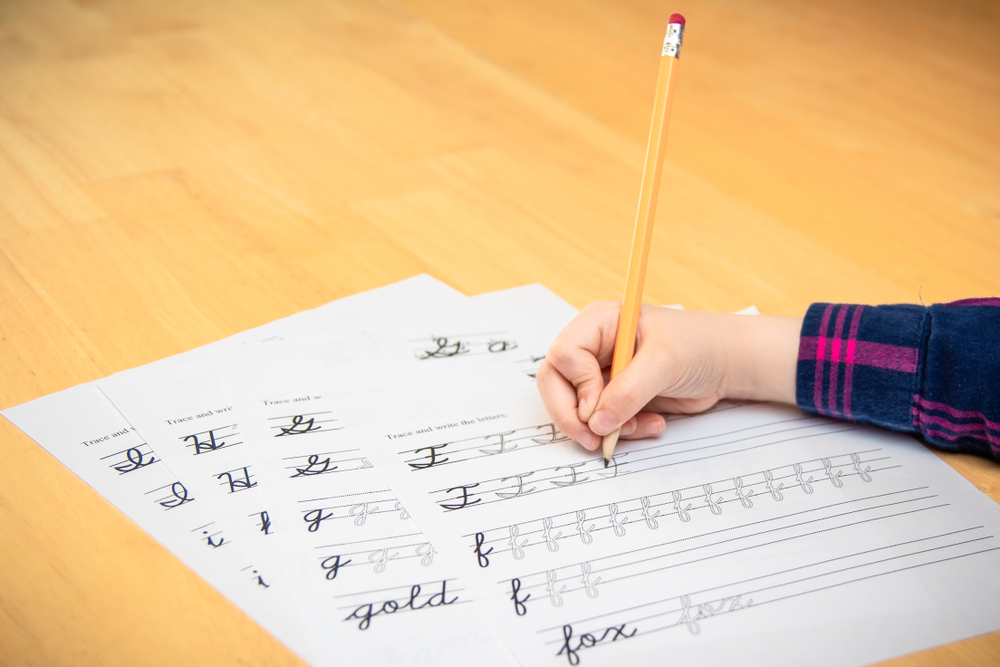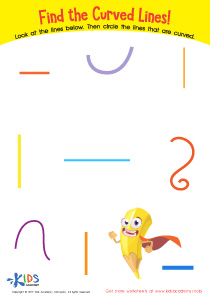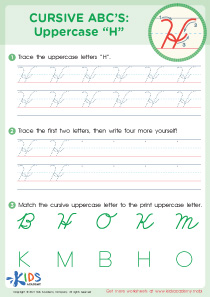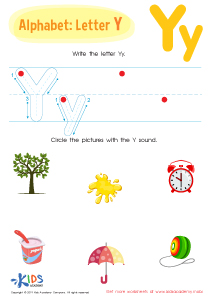Cursive writing practice Alphabet Worksheets for Ages 6-8
11 filtered results
-
From - To
Enhance your child's handwriting with our Cursive Writing Practice Alphabet Worksheets, specifically designed for ages 6-8. These sheets offer engaging exercises that make learning cursive letters fun and effective. Each worksheet guides children through proper stroke formation and letter connections, ensuring they develop smooth, fluid penmanship. Created by education experts, these practice sheets also boost fine motor skills, literacy, and confidence in writing. Ideal for both classroom and home use, our worksheets provide a structured yet enjoyable way to master cursive writing. Give your child the gift of beautiful handwriting today!
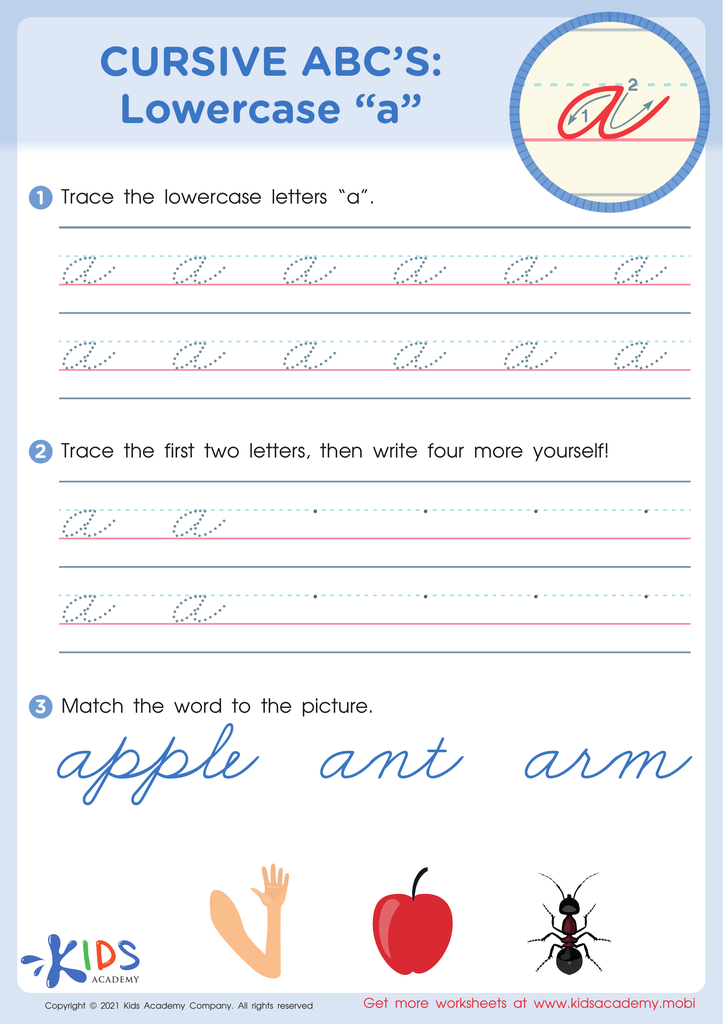

Cursive ABCs: Lowercase a
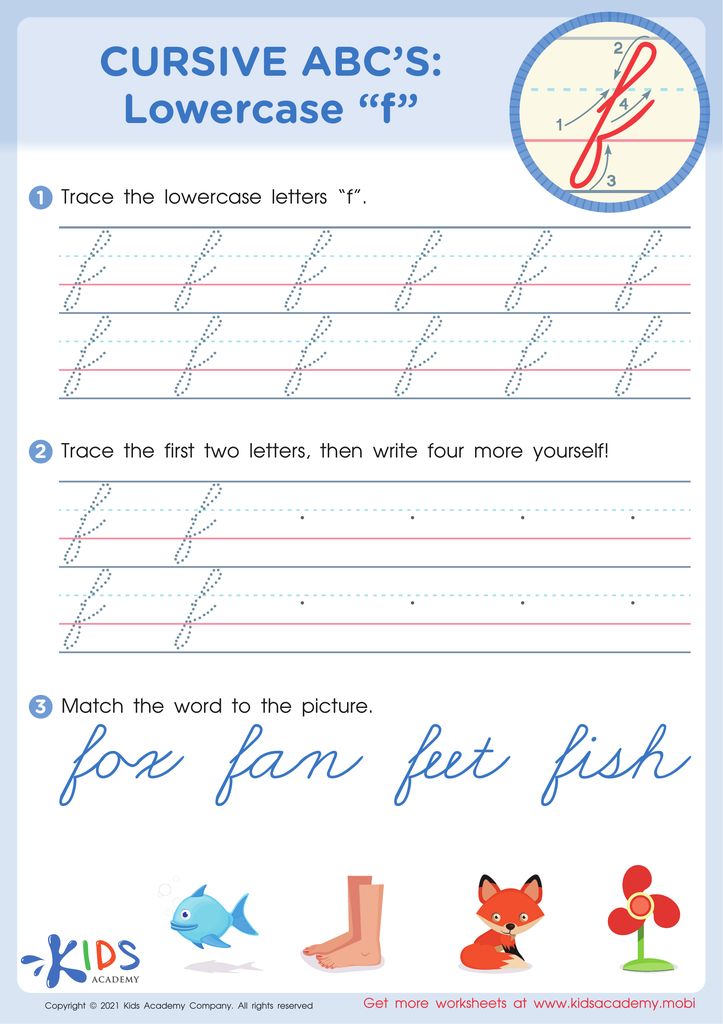

Cursive ABCs: Lowercase f
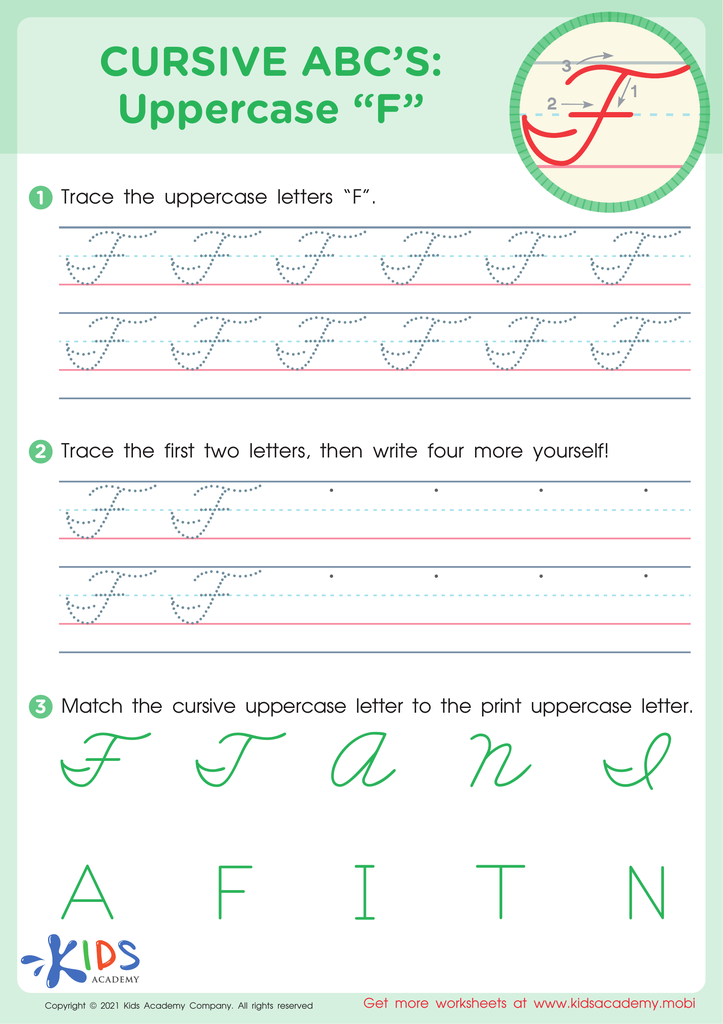

Cursive ABCs: Uppercase F


Cursive ABCs: Uppercase G
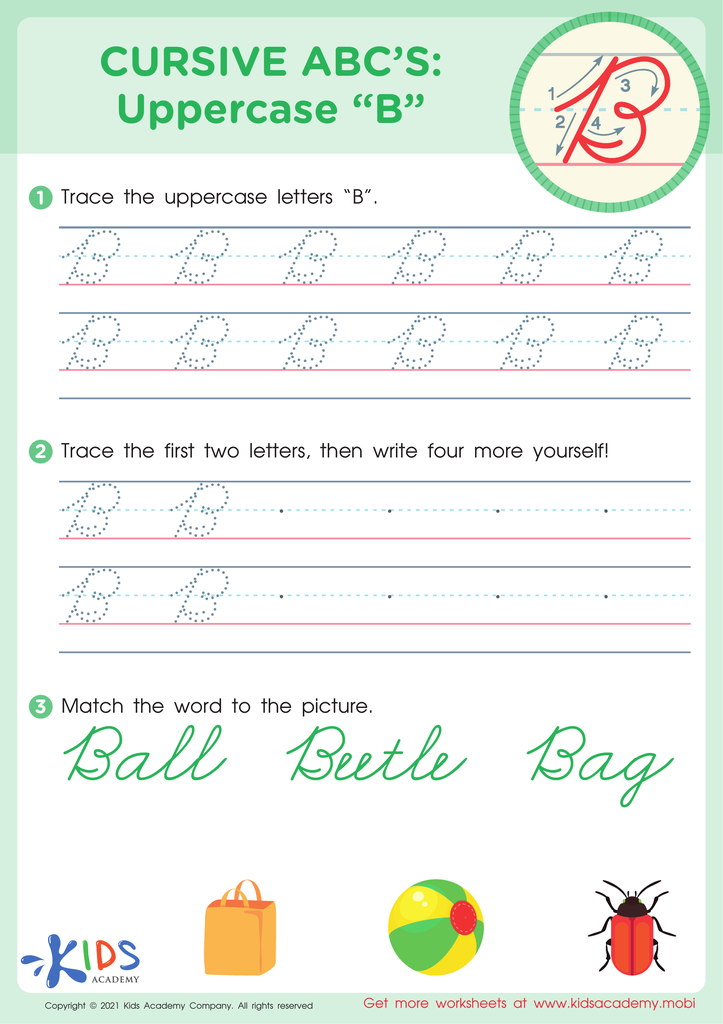

Cursive ABCs: Uppercase B
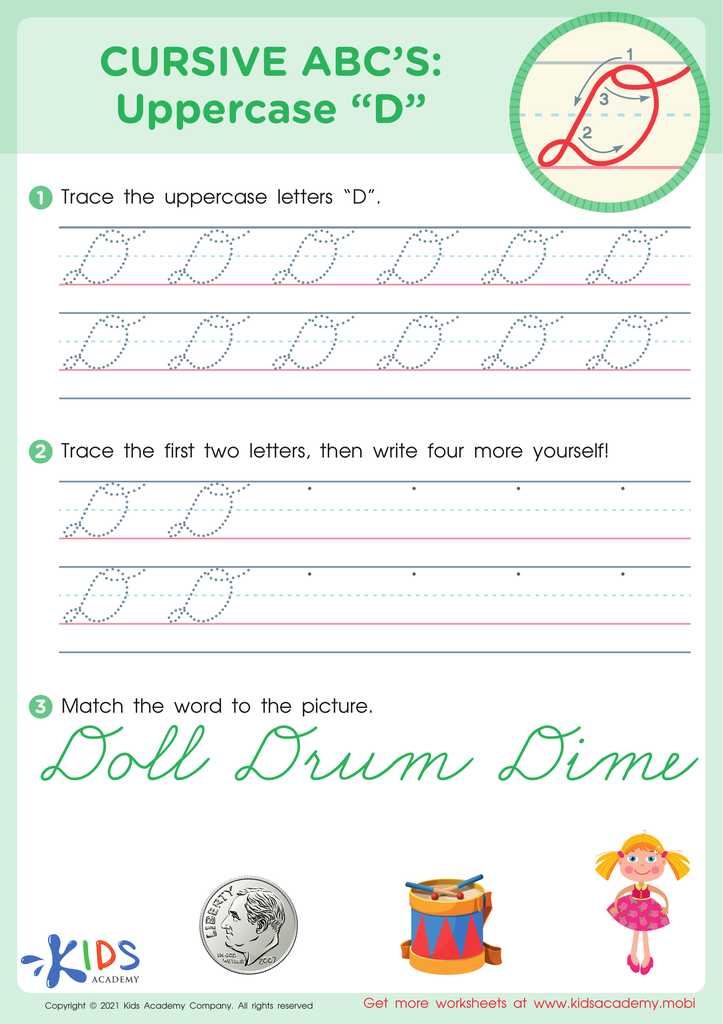

Cursive ABCs: Uppercase D
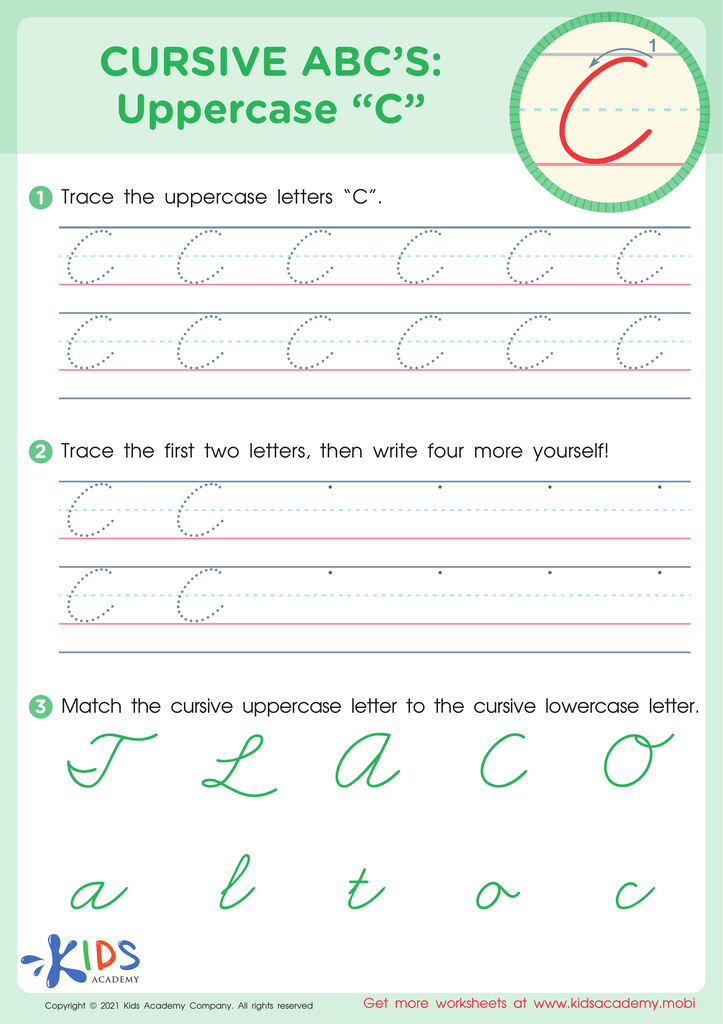

Cursive ABCs: Uppercase C
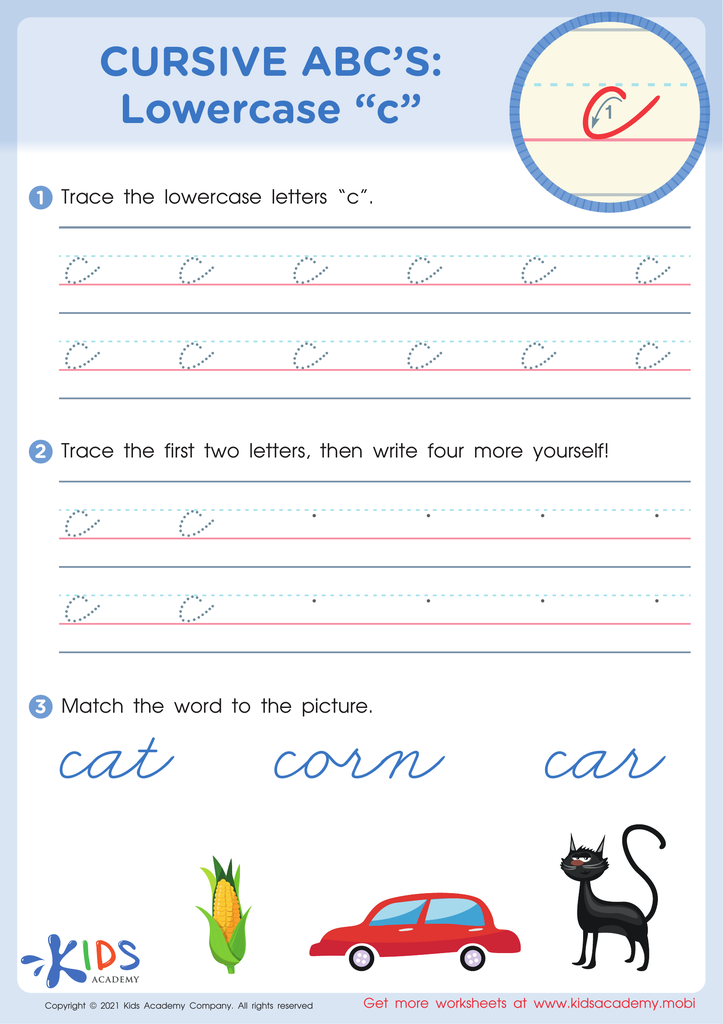

Cursive ABCs: Lowercase c
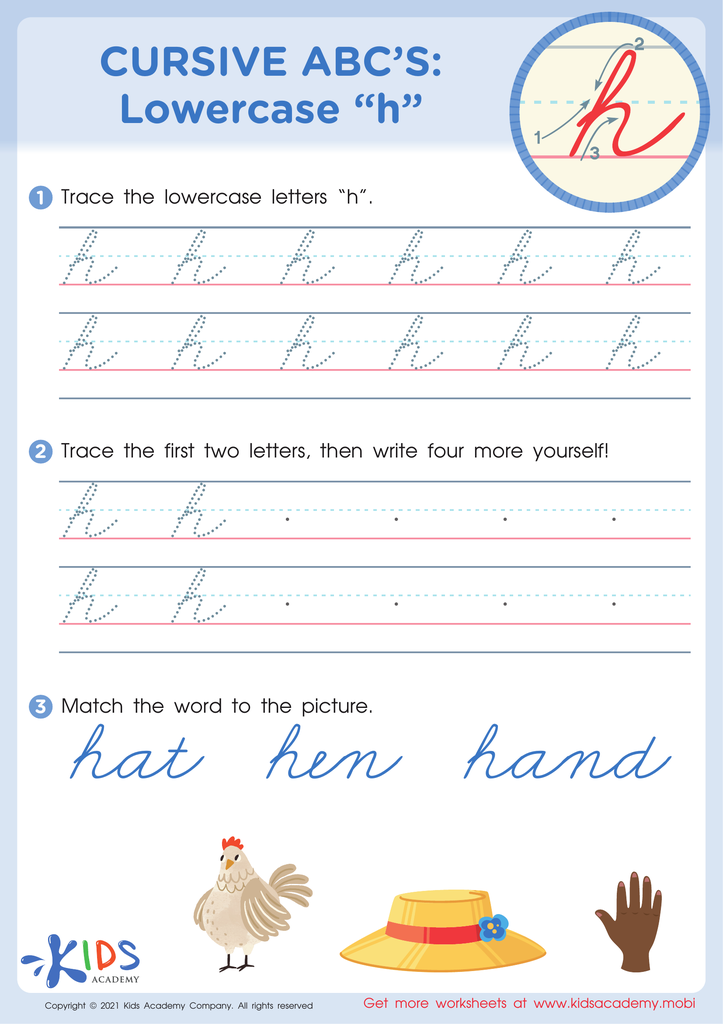

Cursive ABCs: Lowercase h
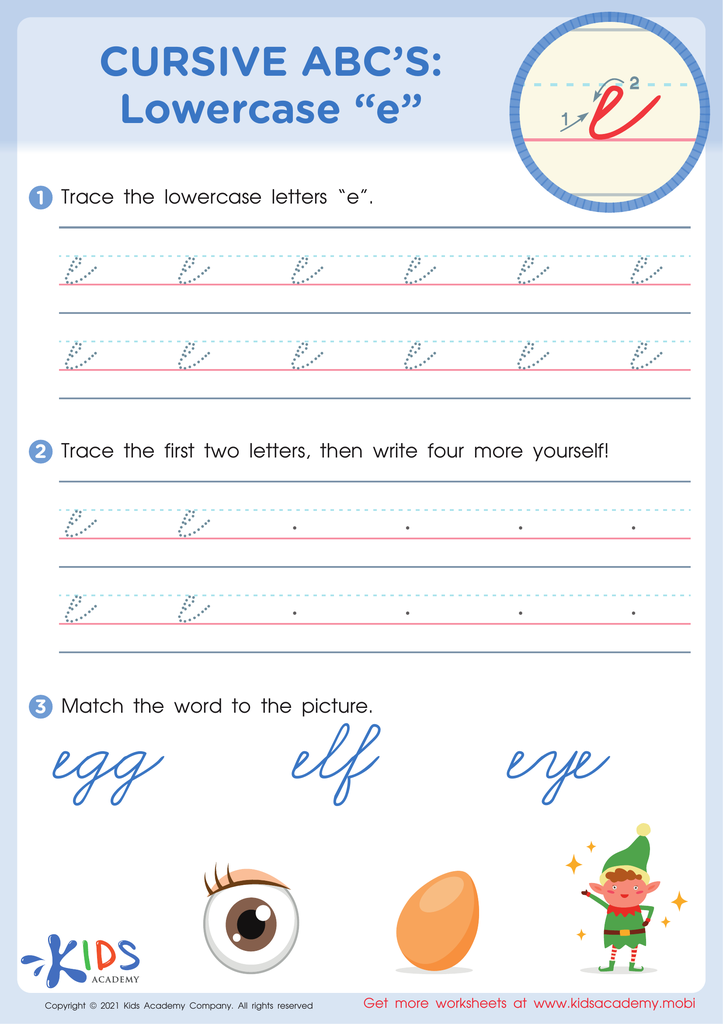

Cursive ABCs: Lowercase e
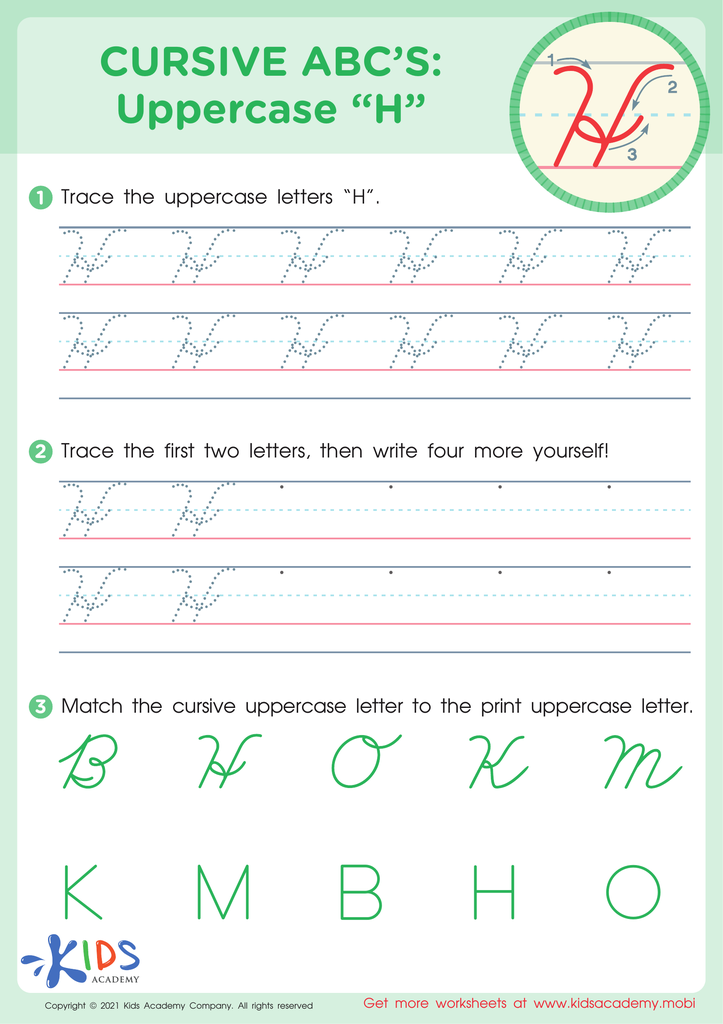

Cursive ABCs: Uppercase H
Cursive writing practice is essential for children aged 6-8 as it promotes numerous developmental benefits crucial for their academic and personal growth. First, cursive writing enhances fine motor skills. The flowing, connected letters require precise control and coordination of the hand and fingers, fostering better dexterity. This improved motor skill development also translates into other activities such as cutting with scissors or playing musical instruments.
Second, learning cursive writing boosts cognitive development. The process involves complicated brain activities, like utilizing the brain's visual, motor, and cognitive areas simultaneously, enhancing memory retention, critical thinking, and problem-solving skills. Furthermore, cursive writing aids in understanding the alphabet's structure and the English language since children learn the smooth, connecting lines that bind letters into words.
Finally, practicing cursive writing can lead to improved academic performance. Research has shown that students who practice handwritten notes tend to understand and recall information better. Additionally, cursive writing can assist in learning to read and write quickly and legibly, important skills for classroom tasks and standardized tests. By investing in cursive writing practice for children, parents and teachers provide a well-rounded foundation that promotes educational success and lifelong learning skills.




